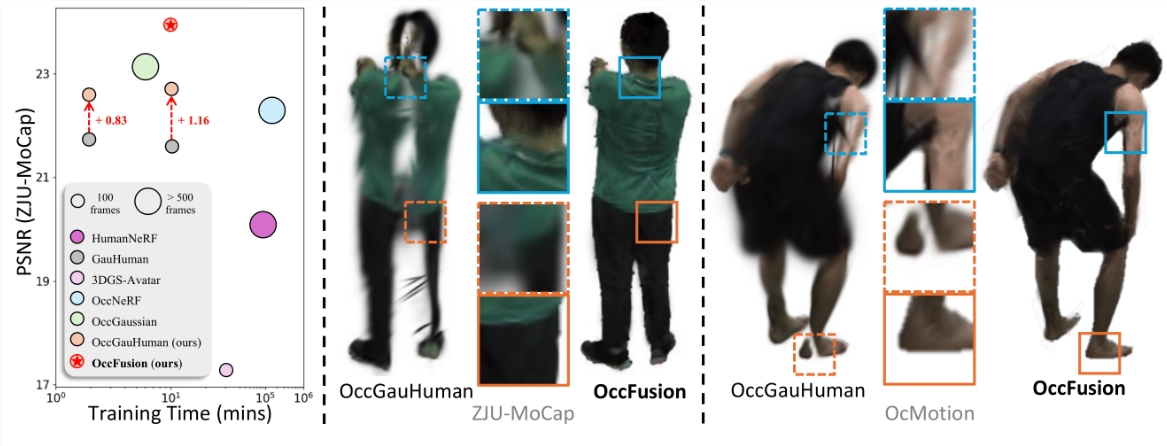The research team at Stanford University recently launched a breakthrough technology - OccFusion, which focuses on solving the problem of blocking human rendering. In real scenes, the human body is often partially blocked by other objects, and OccFusion technology can still achieve high-fidelity human body rendering under such complex situations, showing a complete human body shape.

Product portal: https://top.aibase.com/tool/occfusion
Traditional human body rendering techniques usually rely on fully visible parts of the human body, which has obvious limitations in real-life applications. OccFusion combines efficient 3D Gaussian sharding technology and pre-trained 2D diffusion model to achieve efficient and high-fidelity human body rendering in partial occlusion, bringing a revolutionary breakthrough to this field.
The implementation process of OccFusion technology is divided into three key stages: initialization stage, optimization stage and refinement stage. In the initialization stage, the system generates a complete human mask from a partial visibility mask; in the optimization stage, the human Gauss is optimized through conditioned score distillation sampling; in the final refinement stage, the rendering quality is further improved through context repair technology to ensure the final Keep improving the output effect.
To verify the practical effects of OccFusion, the research team conducted a comprehensive evaluation on ZJU-MoCap and the challenging OcMotion sequence. The results show that OccFusion performs outstandingly in occluding human body rendering, reaching the latest level in the field. What's even more amazing is that the entire training process only takes 10 minutes on a single Titan RTX GPU, fully demonstrating its efficiency.
The core highlights of OccFusion technology include: innovatively solving the problem of occluding human body rendering; adopting a three-stage processing process, combining advanced 3D Gaussian sharding and 2D diffusion model supervision; performing well in multiple benchmark tests and establishing occlusion of human body A new benchmark for rendering. This technology is not only of great significance in the field of academic research, but also shows broad prospects in application scenarios such as virtual reality, film and television production, and game development.